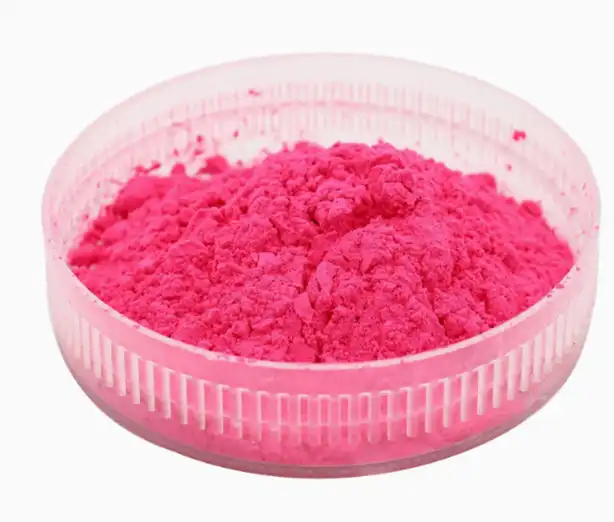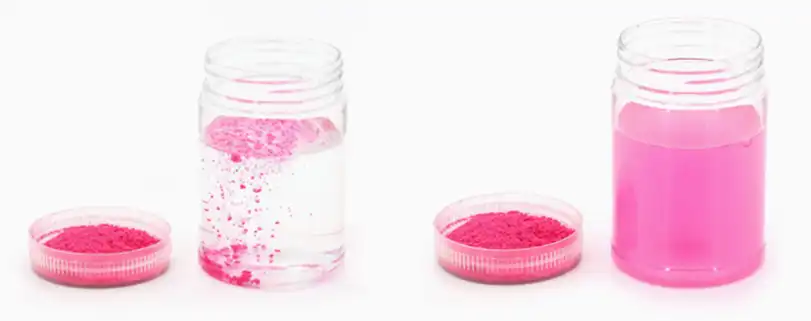The Power of Carthamus Red: Nature’s Vibrant Colorant and Beyond
In the world of natural colorants, few shades carry the same rich history and versatility as Carthamus Red. Derived from the flowers of the Carthamus tinctorius plant—commonly known as safflower—this bright red dye has been a staple in many cultures for centuries. However, its significance goes beyond mere color; Carthamus Red is also known for its various health benefits, industrial applications, and eco-friendly nature. In this post, we’ll explore the many facets of Carthamus Red, shedding light on why this natural pigment continues to captivate industries and consumers alike.
What is Carthamus Red?
Carthamus Red is a natural dye obtained from the petals of the safflower, a plant that has been cultivated for thousands of years. The dye itself is primarily used in textiles, cosmetics, and food products due to its striking, stable red color. It is considered a safer and more environmentally friendly alternative to synthetic dyes, which can often contain harmful chemicals and lead to pollution.
Historically, Carthamus Red has been used as a substitute for Cochineal (a red dye derived from insects), making it a popular choice for those seeking animal-free alternatives in the beauty and food industries. The compound responsible for its vivid color is carthamin, a water-soluble anthraquinone pigment. This natural colorant offers a brilliant red hue with great color-fastness, making it ideal for a variety of applications.

The Benefits of Carthamus Red
Eco-Friendly and Sustainable: Unlike synthetic dyes, which can have detrimental effects on the environment, Carthamus Red is a natural, biodegradable pigment. Safflower plants are relatively easy to grow, and their cultivation doesn’t require harmful pesticides or fertilizers. This makes Carthamus Red a highly sustainable choice for eco-conscious brands and consumers.
Health Benefits: Carthamus Red’s parent plant, safflower, has been utilized in traditional medicine for centuries. It is believed to offer a range of health benefits, particularly in improving blood circulation and supporting cardiovascular health. The flower itself is rich in linoleic acid, an essential fatty acid that can help reduce cholesterol levels and promote healthy skin. When used in cosmetics, Carthamus Red can add vibrant color while simultaneously benefiting the skin due to safflower’s moisturizing properties.
Non-Toxic and Safe: For those concerned about the safety of synthetic colorants, Carthamus Red offers a non-toxic alternative. This natural dye is recognized by regulatory bodies, including the FDA, for use in food and cosmetics. Its gentle nature makes it suitable for people with sensitive skin and is commonly found in makeup, soaps, and skincare products.
Cultural Significance: Carthamus Red has a long-standing cultural legacy. It was used extensively in ancient Egypt, India, and China as a fabric dye and body colorant. The deep red hue was associated with power, beauty, and fertility, and it continues to hold significance in various cultural practices and traditional arts.

Applications of Carthamus Red
Textiles and Fashion: Carthamus Red has found a place in the textile industry due to its rich color and ability to withstand the test of time. Historically used to dye fabrics in the Middle East and Asia, this colorant has reemerged as a sought-after choice for eco-friendly fashion brands. Today, Carthamus Red is still used to create vibrant garments, carpets, and traditional clothing in regions where the safflower plant is grown.
Cosmetics and Personal Care: The cosmetic industry has embraced Carthamus Red for its natural origin and vibrant color properties. From lipsticks and blushes to shampoos and body lotions, Carthamus Red provides a safe, animal-free alternative to synthetic dyes. In skincare, safflower oil, rich in linoleic acid, is often included in moisturizers and serums for its skin-nourishing benefits.
Food and Beverages: Carthamus Red has applications in the food industry, where it is used as a natural colorant in a variety of products. It can be found in food items like baked goods, beverages, candies, and processed foods. Carthamus Red provides a striking, appetizing hue without the use of artificial dyes, which makes it a favorite among brands committed to using clean, natural ingredients.
Pharmaceuticals: In the pharmaceutical sector, Carthamus Red is sometimes used in the formulation of capsules and tablets, offering a natural, non-toxic alternative to synthetic colorants. As an added bonus, the plant’s health benefits make it a natural fit for wellness and health supplements, where the antioxidant properties of safflower are valued.

What are the Advantages of Using Carthamus Red as Natural Colorant?
Natural dyeing is an eco-friendly and non-toxic. And it has the various functional properties. Safflower has been used by dyers for centuries. It was one of the dyes identified on early Egyptian textiles and in the East it was also used to make pigments and cosmetics. Safflower is remarkable because both a yellow and a red dye can be extracted from its petals.
The red dye was used from early times in India and Japan to dye cotton and silk shades of vibrant pinks and orange-red, which tend to fade with the passage of time and frequent exposure to light. The yellow dye, although deep and brilliant at first, also has relatively poor fastness. The red dye from safflower was used to dye the tapes tied around legal documents – hence the term “Red Tape”.
Safe and Non-Toxic: Unlike synthetic dyes, Carthamus Red is derived from natural sources, reducing the risk of adverse health effects. Its non-toxic nature makes it an ideal choice for products like foods, beverages, and cosmetics that prioritize consumer safety.
Rich in Antioxidants: Carthamus Red contains natural antioxidant compounds like carthamin, which can provide additional health benefits in foods and supplements. These antioxidants help neutralize free radicals, offering added nutritional value when used in edible products.
Biodegradable and Environmentally Friendly: As a plant-based dye, Carthamus Red is biodegradable and contributes less to environmental pollution compared to synthetic dyes, which often contain petrochemicals and heavy metals that can harm ecosystems.
Skin-Friendly and Hypoallergenic: Carthamus Red’s gentle, non-irritating properties make it a popular choice for cosmetics and skincare products, especially for people with sensitive skin. It minimizes the risk of skin reactions and allergies often associated with artificial dyes.
Versatile in Application: Beyond food and cosmetics, Carthamus Red is also used in textiles, where it provides a rich, warm color that resists fading. Traditional textile artisans value it for its ability to produce a range of hues depending on dye concentration and fabric type.
Historical and Cultural Significance: This natural dye has been used for centuries, particularly in Middle Eastern, Asian, and Mediterranean cultures, where it holds traditional significance. Its long-standing use in textiles, especially in Japan for kimono dyeing, highlights its durability and unique color properties.
To dye with safflower, use at least equal weights of dyestuff and fibres. (Stronger colours will result if you use twice the weight of the fibres to be dyed.) No mordant is required for pinks and reds. Although no mordant is necessary for yellows, using an alum mordant will improve fastness.

The Growing Popularity of Natural Dyes
As consumers become more conscious of sustainability, the demand for natural dyes, including Carthamus Red, is on the rise. Many industries are shifting away from synthetic colorants, which often rely on petrochemicals, in favor of plant-based alternatives that are safer for both human health and the environment. This trend aligns with the broader movement towards ethical production practices, where businesses strive to reduce their ecological footprint and promote transparency in their sourcing and manufacturing processes.
Moreover, Carthamus Red offers a unique advantage over other natural dyes, such as those derived from insects or mineral sources. It is not only vegan-friendly but also gentle on the skin, making it ideal for personal care products that require a non-irritating formula.

Why Choose Carthamus Red?
Rich, Stable Color: The intense red hue of Carthamus Red makes it a desirable choice for applications requiring bright, attention-grabbing color. Whether it’s used in fashion, cosmetics, or food, Carthamus Red remains vibrant over time, with excellent resistance to fading and degradation.
Versatility: From textile dyes to food additives, Carthamus Red’s versatility allows it to be used across a wide range of industries. Its natural origin and non-toxic nature make it a perfect fit for consumers who demand clean, safe products.
Sustainability: With growing environmental concerns, choosing a natural and sustainable dye like Carthamus Red is a smart choice for businesses aiming to reduce their carbon footprint and appeal to eco-conscious consumers.
Wrapping up, Carthamus Red is more than just a vibrant colorant; it represents a shift towards a more sustainable, ethical, and health-conscious way of consuming and producing. With its deep historical roots, wide-ranging applications, and numerous benefits, this natural dye continues to thrive in modern industries, offering a safe and eco-friendly alternative to synthetic dyes.
Whether you're a manufacturer looking for a natural colorant, a consumer seeking products that align with your values, or simply someone fascinated by the wonders of nature, Carthamus Red offers a compelling choice. By choosing natural options like Carthamus Red, we can embrace a future where beauty, health, and sustainability go hand in hand.
Why Choose Yangge Biotech for Carthamus Red?
Yangge Biotech is your trusted source for premium Carthamus Red. Here’s why:
Top-Quality Products: Yangge Biotech ensures the highest standards of purity and color consistency, meeting global regulatory standards for food, cosmetics, and textiles.
Sustainable and Ethical: The company is committed to eco-friendly sourcing and responsible agricultural practices, making it the go-to choice for businesses seeking a natural, sustainable colorant.
Customization: Whether you need powder, liquid, or concentrated forms, Yangge offers flexible solutions tailored to your needs.
Certified and Reliable: With certifications like GMP, ISO, and Kosher, you can trust the safety and quality of every batch of Carthamus Red.
Global Reach, Excellent Service: With a strong global presence and exceptional customer support, Yangge Biotech ensures a smooth, hassle-free experience from start to finish.
Choose Yangge Biotech for Carthamus Red and experience unmatched quality, sustainability, and customer satisfaction.
References:
Delshad E, Yousefi M, Sasannezhad P, Rakhshandeh H, Ayati Z. Medical uses of Carthamus tinctorius L. (Safflower): a comprehensive review from Traditional Medicine to Modern Medicine. Electron Physician. 2018;10(4):6672-6681. doi:10.19082/6672
MedlinePlus. Facts about monounsaturated fats.
Centers for Disease Control and Prevention. LDL and HDL cholesterol and triglycerides.
Centers for Disease Control and Prevention. Prevent high cholesterol.
ScienceDirect. Oleic acid.
Chen Y, Li M, Wen J, et al. Pharmacological activities of safflower yellow and its cinical applications. Evid Based Complement Alternat Med. 2022;2022:2108557. doi:10.1155/2022/2108557
Orgah JO, He S, Wang Y, et al. Pharmacological potential of the combination of Salvia miltiorrhiza (Danshen) and Carthamus tinctorius (Honghua) for diabetes mellitus and its cardiovascular complications. Pharmacol Res. 2020;153:104654. doi:10.1016/j.phrs.2020.104654
Natural Medicines. Safflower.
Ambreen G, Siddiq A, Hussain K. Association of long-term consumption of repeatedly heated mix vegetable oils in different doses and hepatic toxicity through fat accumulation. Lipids Health Dis. 2020;19(1):69.
MedlinePlus. Total parenteral nutrition.
Send Inquiry
Related Industry Knowledge
- Common Misconceptions About Yeast Extract Beta Glucan Powder
- Spirulina powder has effects on the body
- Is Buying Spirulina Powder in China Safe?
- Blue Spirulina: The Ultimate Superfood Nutrient
- Benefits of the Milk Thistle to Liver
- Sea Moss and Bladderwrack Health Benefits
- Ground Psyllium Husk Powder: Nutrition and Keto
- what is soy lecithin used for in food
- is anthocyanin an antioxidant?
- Is magnesium malate good for bones?


